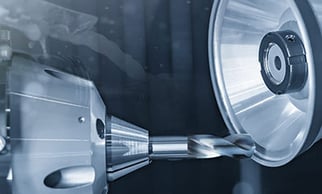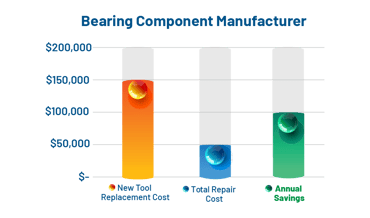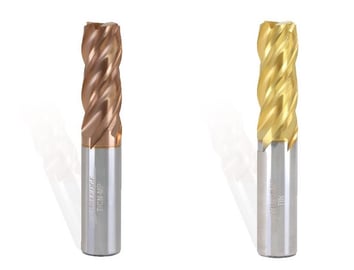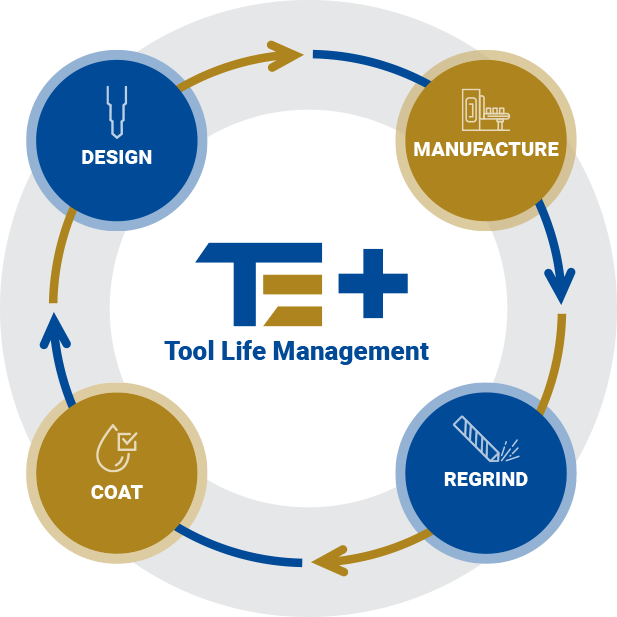Meeting Your Tooling Needs Under One Roof Has Its Advantages [4 Capabilities, Many Benefits]
With profit margins continuing to get squeezed, efficiency and productivity are becoming more important than ever to manufacturers across a wide range of industries, including Automotive, Aerospace, Medical, and General Manufacturing.
According to a recently published article by the management consulting firm McKinsey and Company titled 2024 and beyond: Will it be economic stagnation or the advent of productivity-driven abundance? “Productivity can transform entire companies, industries, and even economies if we can collectively accelerate progress in months and years rather than decades — something companies proved they could do during the pandemic. Productivity is the imperative that can deliver business outperformance and a future of abundance.”
Applying that outlook to the world of tooling, using the same supply chain partner for all tooling requirements, manufacturers can go a long way toward improving their operational efficiency and productivity. That quartet of requirements includes 1) Engineering tooling that is customized to specific applications; 2) Manufacturing new tooling; 3) Regrinding used tooling; and 4) Coating new and reground tooling to improve tool life, reduce overhead costs, and minimize environmental impact.
A Hands-on Approach to Engineering Application-Specific Tooling
 To make certain that the design and testing work is fully applicable to a customer’s application, a reliable tooling partner with the customer’s best interests always in mind will visit the customer’s facilities to gain first-hand knowledge of the customer’s operations and processes (How novel in this post-COVID age of Teams and Zoom meetings and exchanging of emails!) to facilitate the design of the right tools the first time to optimize performance within machining parameters.
To make certain that the design and testing work is fully applicable to a customer’s application, a reliable tooling partner with the customer’s best interests always in mind will visit the customer’s facilities to gain first-hand knowledge of the customer’s operations and processes (How novel in this post-COVID age of Teams and Zoom meetings and exchanging of emails!) to facilitate the design of the right tools the first time to optimize performance within machining parameters.
When it comes to engineering tooling that meets the customer’s exacting specifications, it is critical to partner with an organization that has invested considerable resources in CAD/CAM tool design software that allows for end-to-end project oversight, metrology equipment, and a lab for testing various tool designs so users can understand the data behind tooling performance under given sets of conditions.
The best solutions should streamline chipmaking operations, eliminate the need for multiple tool setups, and reduce the percentage of variance at the point of cut to 0%, or very close to that number. What’s more, your tooling partner should have the ability to diagnose and quickly solve any problems, or help you overcome any challenges that occur during the testing phase of the process.
Using the Most Modern Technology to Manufacture Application-Specific Tooling
 Today, technology exists for seamlessly integrating tool design with manufacturing. If a tool manufacturer is not using this type of interface, it should raise a red flag with manufacturers who need quality tooling quickly and cost-effectively.
Today, technology exists for seamlessly integrating tool design with manufacturing. If a tool manufacturer is not using this type of interface, it should raise a red flag with manufacturers who need quality tooling quickly and cost-effectively.
By using technologies and equipment such as robotic handling, automatic wheel pack change-out, internal wheel dressing, and internal machine laser measuring, a tool manufacturer can produce quality tooling efficiently. Nowadays, a manufacturer can also monitor processes 24/7 through a Machine Metrics platform.
This type of production system integrates tool design and process simulation with a distributed numerical control (DNC) network that connects a wheel pack measuring system with CNC programming to optimize production efficiency.
Regrinding that Helps to Maximize Tool Life
 Whether your application requires tool holders and cartridges, end mills, core drills, milling cutters, taps, saws, indexable drills, gun drills, reamers, port tools, trepan tools, modular tools, multi–function tools, tooling heads, or modified or specially manufactured tools such as special blueprint tooling, regrinding prolongs tool life less expensively than replacing spent tooling with new tooling.
Whether your application requires tool holders and cartridges, end mills, core drills, milling cutters, taps, saws, indexable drills, gun drills, reamers, port tools, trepan tools, modular tools, multi–function tools, tooling heads, or modified or specially manufactured tools such as special blueprint tooling, regrinding prolongs tool life less expensively than replacing spent tooling with new tooling.
It also allows you to generate less scrap, which is good for the environment; increase Overall Economic Efficiency (OEE); and simplify your life by regularly shipping spent tooling for regrinding and receiving reground or refurbished tooling at pre-determined intervals (e.g., weekly, twice a month, monthly, every other month) to use immediately.
Regardless of tooling material or tooling type, such High Speed Steel (HSS), Cobalt High Speed Steel (HSSE), Powdered Metal Steel (PM), Solid Carbide, Coolant-Fed Carbide, Carbide Tipped Tooling, and regardless of the tool quantity or geometry a customer needs, or any special service requests, a strong tooling partner will know how to handle any set of requirements.
To help tooling users like you obtain a precise understanding of how much money they can save by regrinding used tooling instead of purchasing new tooling, a tooling partner should be able and willing to provide you with a Cost Reduction Report. Those reports are easy to generate these days, and a tooling partner, or potential partner, who does not provide that data in a timely manner, or at all, should give you cause for concern.
In our experience, regrinding can reduce Total Cost of Ownership (TCO) by up to 30% while giving you more tool life, greater sustainability, and higher value than other options.
Coating That Protects Your Tooling from the Work Environment
 The best tooling is engineered to accommodate PVD coatings (Physical Vapor Definition or thin film coatings) or other types of coating to help maximize tool life and accommodate more resharpening and regrinding than would be possible if the tooling were uncoated.
The best tooling is engineered to accommodate PVD coatings (Physical Vapor Definition or thin film coatings) or other types of coating to help maximize tool life and accommodate more resharpening and regrinding than would be possible if the tooling were uncoated.
Commonly Used Tool Component coatings are:
- FeinAl® -- A superior wear protection and life extension coating for fineblanking operations.
- Tru-PLEX™-- A unique coating with stoichiometry engineered for high-production applications in the forming, punching, bending, and deep drawing industries.
- Tru-PLEX-CT™ -- Enhanced AlCrN based multilayer coating with high wear resistance for forming and stamping applications.
- CYBER-Coat MP™-- An Edge enhanced TICN-MP coating for the stamping industry and traditional tool and die applications.
- TiCN-MP – A standard TICN coating for forming, stamping, and deep draw applications.
- TiN – A general-purpose coating for injection molding and guide pins.
Commonly used cutting tool coatings are:
- ALL4® -- A new generation of QUAD Coatings4® to improve cutting performance in a variety of materials. This is the one to deploy to improve tool life over old-generation AlTiN coatings. It is the standard for universal applications.
- TixCo4® -- is a fourth-generation coating optimized for superhard machining and milling. It is an excellent choice for hard-to-cut aerospace materials.
- TixCo3® is a third-generation coating optimized for drilling in a wide range of materials, especially hard and abrasive metals. It is ideal for dry or near-dry drilling.
- Tru-PLEX-CT™ is an enhanced AlCrN based multilayer coating with high wear resistance against abrasive loads. Good heat and oxidation resistance. Performs well in milling applications. It is ideal for very dry applications.
- nACo® is a nanocomposite coating with extremely high nanohardness and heat resistance – excels in high-performance, dry applications – think stainless steel milling.
- nACrO is a nanocomposite coating that delivers extremely high scratch and heat resistance. It is ideal for drilling steel and for most drill applications.
- TiCN-MP is a tough multipurpose coating for interrupted cutting and milling.
- ALTiN is a longtime coating used universally in cutting tool applications.
- ZrN is a monolayer coating for reduction of edge buildup when machining aluminum (<12% Si content). With good heat resistance, this coating is an excellent choice for machining titanium alloys.
- TiN is a general-purpose coating that can be called “the old standard” with good reason. A variation of this coating called Flash Coat TiN can be applied to indexable carbide inserts to enable operators to easily identify used and worn edges.
To determine which coating is best for your tooling, it is highly advisable to speak with an applications engineer before deciding because putting the “wrong” coating on a tool can end up costing you more than buying new tooling.
4-in-1 Expertise
Sourcing the best tool engineering, manufacturing, regrinding, and coating partners may appear to be difficult in theory, but in practice, it’s as straightforward as can be. At Tru-Edge, we call it TE+. Simply stated, it’s our tool life management program that allows you to concentrate on your core responsibilities and delegate your tooling needs to us.

Our TE+ Tool Life Management Program is customized to your specific requirements related to tool design, manufacturing, regrinding, and coating. Just as the song “Circle of Life” from the movie Lion King expresses the belief that every living thing exists as part of a delicate balance, the TE+ program helps tooling users like you maintain stability by helping you forecast your tooling needs and budgets most accurately.
By using TE+ instead of the “cafeteria” approach of purchasing different services from different partners, you can best meet your productivity and financial goals. To explore the possibilities…


